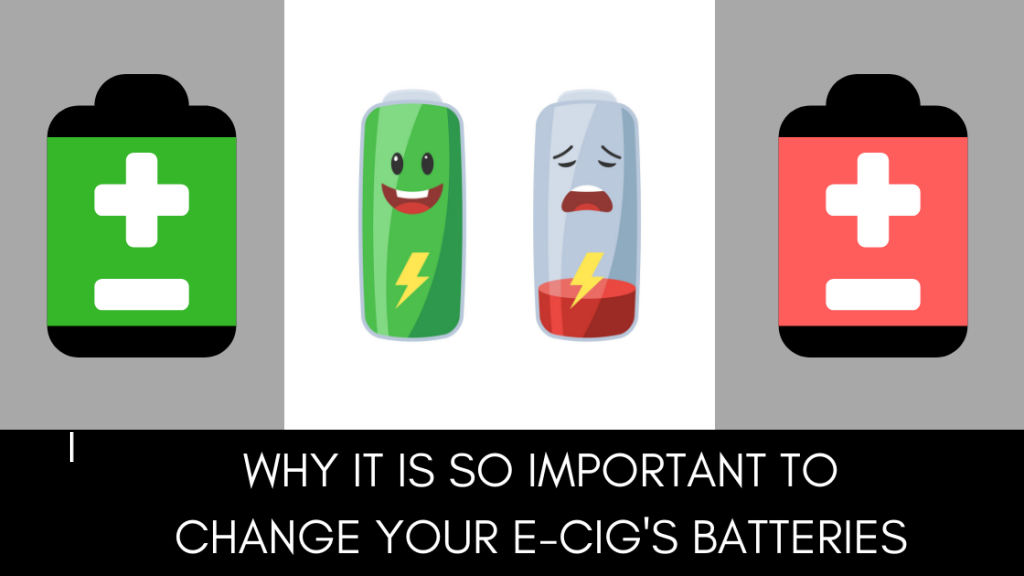
We have all heard stories of electronic cigarettes exploding. Many of these situations occur when the user fails to up keep their batteries.
While electronic cigarettes very rarely experience catastrophic failure to the point of explosion, when they do, the media loves to get a hold of these stories and blow them out of proportion.
In order to protect the good intentions of the electronic cigarette we must understand what leads a battery to fail in such dangerous ways.
Reports of Exploding E-Cigs

Unfortunately, when the media gets a hold of stories involving exploding electronic cigarettes they tend to weaponize the stories and use them as ammunition against the e-cig industry.
To better understand how these explosions occur, we turn to a report given by the United States Fire Administration.
In this report, USFA reviewed 195 reported electronic cigarette fires & explosion that occurred between January 2009 and December 31st 2016. It is important to note that not one of these 195 reports resulted in lethal injuries.
Out of the 195 reported explosions and fires, 61 occurred when either the device or spare batteries were stored in the pocket. 60 occurred when the devices were in use. 48 occurred while batteries were being charged, presumably via the devices internal charging port. 18 occurred while the devices were stored, 7 occurrences were not able to be determined and 1 failed while in a cargo area on an airplane.
USFA noted that “Media reports generally characterize these incidents as explosions. While there is generally a brief period of overheating and off-gassing at the onset of the event, the events tend to occur suddenly, and are accompanied by loud noise, a ash of light, smoke, flames, and often vigorous ejection of the battery and other parts.”
While examining the recorded injuries USFA found that 62 incidents resulted in either no injuries or no injuries were reported. 15 incidents resulted in minor injuries, while 80 incidents resulted in moderate injuries. Moderate injuries were defined as injuries that resulted in smoke inhalation, 2nd degree burns, and lacerations requiring stitches.
The 38 remaining occurrences were reported as sever injuries. Injuries are defined as severe when the patient required hospitalization, loss of a body part, 3rd degree burns, or facial injuries.
In 2014 there were a reported 15 electronic cigarette fires or explosions. Since then that number has risen to 98 reported cases in 2016.
The growing popularity in electronic cigarettes is expressed by the increased sales in year past. In correlation to the increased popularity and sales, the number of incidents regarding e-cig fires and explosions has too increased.
How Batteries Work

When it comes to using an electronic cigarette and maintaining its parts, batteries are often over looked. Batteries seem to be taken for granted time and time again. While it may not be unlikely that faulty devices could cause a fire or explosion, it is highly more likely that batteries are the main culprit.
In order to understand why batteries can prove to be so dangerous, we must first understand the basics of what makes a battery a battery.
In the 1780’s Alessandro Volta headed an experiment that used an alternating stack of copper and zinc. Sandwiched between these circular metal plates were sections of cloth soaked in a salt water solution. The reaction that occurred is what is called oxidation and reduction.
The zinc plates oxidizes, meaning it loses electrons. Those electrons are picked up by the copper and redistributed into the ions of the water, this process is known as reduction. Today, we honor Alessandro Volta and his amazing discovery by naming the standard measurement of electric potential the Volt.
The flow of electrons between the zinc, copper, and salt water cloth creates a current. When hooked up to a lightbulb, this current will power it on!
Since Volta’s invention in the 1780’s scientists have improved upon the original design by replacing the chemical solution with dry cells containing chemical paste.
Every battery has a limited amount of metal. Once the metal is fully oxidized it no longer has electrons to send off. With no electrons left to be obtained by the chemical past, the battery fails to perform and eventually dies out.
Now that we understand the basics of how batteries work, lets dive into how rechargeable batteries work. Rechargeable batteries have the ability to allow electrons to flow backwards.
When plugged into an electrical outlet the electrons are drawn out from the chemical paste and in turn recharge the metal. When the electrons are re absorbed into the metal, the metal can once again be oxidized which allows you to charge your e-cig.
However, over time the reuse of a battery can cause imperfections in the metals surface. This is where repeated use and abuse can become dangerous. During the oxidization and reduction process hydrogen gas is created.
When you introduce a battery that has been repeatedly charged to your pocket, things like car keys, cell phones, coins and other metal objects can become an enemy.
If any foreign metal touches the battery it could cause the battery to heat up, thus causing fires and sometimes explosions.
Proper Up Keep

Batteries are just like humans, their path to death starts the day they are created. According to Duracell and Kodak, batteries are best kept in a cool storage area, preferably kept around 60 degrees Fahrenheit. Unfortunately, if you are keeping your batteries in your freezer, you might want to go home and move them to the fridge.
It is also suggested that batteries be kept in a dry place. Best kept in original packaging or a sealed plastic baggy. In order to preserve the lifespan of your batteries do you best to keep the positive and negative sides away from each other, this will prevent them from conducting while sitting idle.
Keep track of your new and old batteries, and be sure to keep them separated. Storing new batteries nearby old batteries could drain the charge of the new battery, making its lifespan shorter.
If you aren’t using your mod, take the batteries out. Keeping the batteries inside of a device that you aren’t using will only work to shorten the lifespan.
And as common sense would have it, never ever peel any battery wrap off. If you notice a slight rip or tear in any plastic covering your battery, it is best to just dispose of it and get a new one. Better safe than sorry.
Conclusion
As vapers, we understand the importance of having readily available batteries. Batteries, although often overlooked, are the lifeblood of the industry. Without batteries we would have no mods and we would have no e-liquid.
So, the next time you go to charge you batteries be sure to check on their condition. Together we can lower the amount of injuries that occur from battery abuse and in turn better the name of the vaping industry!
